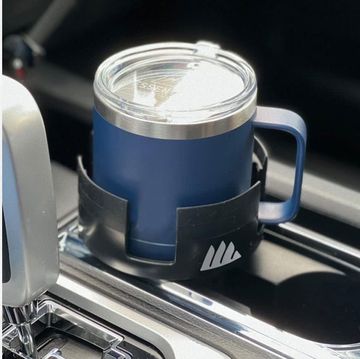It’s important to have quality headlights to light your path. However, those bulbs aren’t doing any good if they’re not correctly aimed at the road, and that’s something many owners forget or downright neglect when owning a car.
Time or merely replacing the bulb can cause a car’s headlights to become misaligned. This could lead to reduced visibility, which is a huge problem when driving at night. When you’re traveling at 60 mph, you have only seconds to avoid a collision if something darts into the road. Misaligned lights can reduce your reaction time to zero.
Making Some Adjustments
Adjusting headlights is an easy though often tedious task that takes time to get right, and every car is different. With practice and patience, you can learn to do it in your driveway in a matter of minutes.
Start by checking whether your car has built-in bubble levels meant to help you align the headlights. Honda, for example, offers vertical and horizontal bubble levels that make it easy to tell if your headlight aim is off. They’re often located on the top and side of the headlight unit. With these, you can tweak the aim, until the bubble is centered in the level. Some makes and models offer only vertical or horizontal bubble levels while most others provide no visible alignment indicator at all.
If your car lacks such a convenience, don’t worry. There’s a surefire do-it-yourself way to check your headlight alignment and get your lights back into shape.
First, park on flat ground and make sure your car is level. That means unloading heavy cargo, filling the gas tank to full and making sure tire pressure is correct at all four corners. You can’t align headlights if your car isn’t level. Make sure your suspension is in working order and isn’t causing your car to point up or down at any one side, too.
Next, find a plain wall. Pull the car as close to the wall as possible and turn on your lights. This way, you’ll find the centers of the low-beam headlights. Mark both spots with a single piece of horizontal tape running through the middle. Make the vertical tape marker about two feet long, again running through the center of the low-beams.
After that, find the headlight adjusters. Each make and model is different, but generally, the adjusters are a type of screw or bolt on the back or side of the headlight unit. While they’re not often marked, they tend to be gray or silver, which stands out from the black headlight housing.
However, some vertical adjusters are located on the bottom of the unit, as is the case with several GM vehicles. This makes access difficult. Sometimes automakers cut a hole in the vehicle’s metal structure that allows access to the adjusters. A look at the owner’s manual or a quick Google search can help.
Lining Things Up
After you find the adjusters, back up the vehicle until it’s 25 feet from the wall. We recommend that you measure this out so the distance is accurate. This is a general distance guideline, as some manufacturers use different distances for headlight alignment. Chrysler recommends aligning headlights at 33 feet while Toyota says 10 feet. Here’s another instance where the owner’s manual comes in handy.
Once you’ve backed up, block one headlight and look at where the other beam falls compared to the markings you made on the wall. For vertical aim, the top of the most intense part of the beam should be at or below the centerline of your horizontal tapeline.
For horizontal aim, the most intense part of the beam should be to the right of the vertical tapeline. This is so you don’t blind oncoming traffic and so you can see the side of the road and any people, animals or things that might pop out into your path. Make adjustments as necessary if the aim is off by turning the adjusters a quarter of a turn at a time to see where the new alignment falls. Do the same procedure for the other headlight.
Good news! Adjusting your low beams will also reset your high beams to where they should be, as most cars don’t have a separate adjustment for the high beams.
Some states and countries have their own specifications when it comes to aiming headlights, so it’s best to follow those rules when aligning yours. Many automakers offer specific headlight aiming specs, too. For example, General Motors says there should be zero distance between the center of the beam and the horizontal centerline of the headlamp, while Toyota says a 1/2 inch is within spec. Chrysler allows two to six inches below centerline while Nissan allows for slightly more than 3 1/2 inches.
If you follow these instructions, you'll have a better chance at dodging wayward deer on the roads—and other drivers will appreciate your hard work.
Anthony is a freelance writer covering the automotive industry and horror entertainment.
Stef Schrader routinely breaks and attempts to take project cars on race tracks. She enjoys fancy cheeses, good coffee, fast Porsches, traveling to new places and rare, weird cars. She lives with a large collection of Fisher-Price Puffalumps and an overloaded parts shed.














